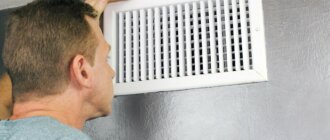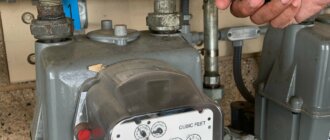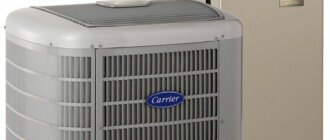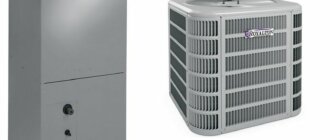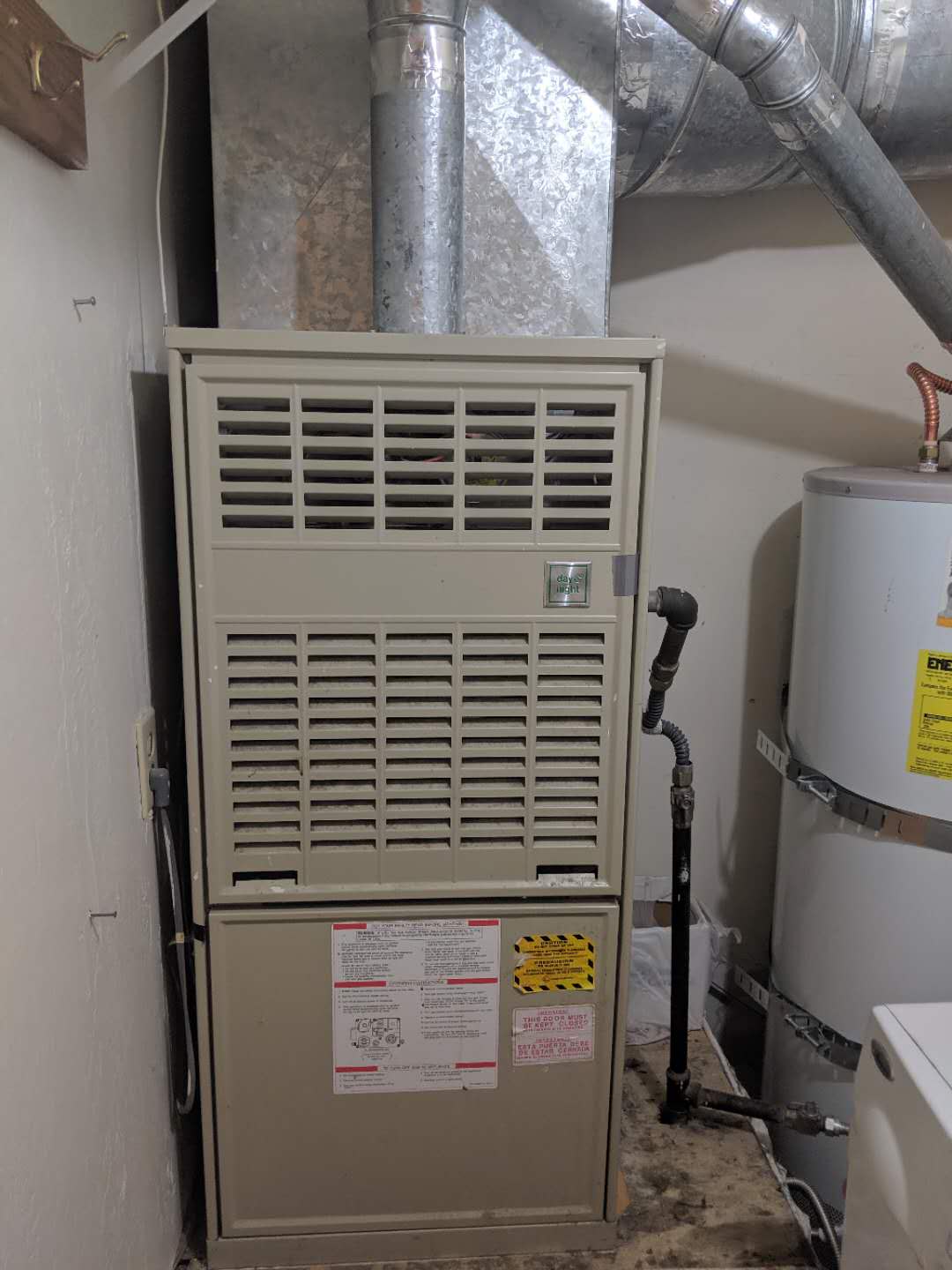
Is Ventilation Necessary for Electric Furnaces?
Electric furnaces are a popular choice for heating homes and commercial spaces because of their efficiency and ease of use. Unlike gas or oil furnaces, electric furnaces do not produce any combustion byproducts, such as carbon monoxide, which can be harmful if not properly vented. This leads to the common misconception that electric furnaces do not require ventilation. However, ventilation is still an important consideration when it comes to electric furnaces.
While electric furnaces do not produce combustion byproducts, they still generate heat and require proper airflow to operate efficiently. Without adequate ventilation, the heat generated by the furnace can become trapped, causing the unit to overheat and potentially leading to a breakdown. Additionally, without proper ventilation, the air quality in the space being heated can become stagnant and unhealthy.
Proper ventilation for an electric furnace typically involves a combination of intake and exhaust vents. The intake vents allow fresh air to enter the space and provide the furnace with the oxygen it needs for combustion. The exhaust vents, on the other hand, allow the hot air produced by the furnace to escape. This ensures that the furnace operates at its optimal temperature and prevents the buildup of heat and moisture.
In conclusion, while electric furnaces do not produce combustion byproducts, they still require ventilation to operate efficiently and maintain good air quality. Proper ventilation involves a combination of intake and exhaust vents to ensure the furnace has adequate oxygen for combustion and to prevent the buildup of heat and moisture. It is important to consult with a professional HVAC technician to determine the specific ventilation requirements for your electric furnace.
Does an electric furnace pull air from outside?
Electric furnaces do not typically pull air from outside for combustion like gas or oil furnaces do. Instead, they use electrical resistance to generate heat. This means that electric furnaces do not require ventilation for combustion purposes.
However, it is important to note that electric furnaces still require proper ventilation to ensure efficient operation and to maintain good indoor air quality. Adequate ventilation helps to remove stale air, odors, and moisture from the home, creating a healthier living environment.
In most cases, electric furnaces are connected to the home’s existing ductwork system, which allows for the distribution of heated air throughout the house. The ductwork also plays a role in providing ventilation, as it allows for the exchange of indoor and outdoor air.
Proper maintenance of the ductwork, including regular cleaning and sealing any leaks, is essential for optimal ventilation and energy efficiency. Additionally, homeowners should ensure that the air filters in the furnace are regularly cleaned or replaced to prevent the accumulation of dust and debris.
Overall, while electric furnaces do not require ventilation for combustion purposes, proper ventilation is still necessary for optimal operation and indoor air quality. Homeowners should consult with HVAC professionals to ensure that their electric furnace and ventilation system are working effectively.
No, recirculates interior air
An electric furnace does not require ventilation because it operates by recirculating the interior air. Unlike gas furnaces, which produce combustion byproducts that need to be vented outside, electric furnaces use heating elements to warm up the air inside the home.
This means that the air circulated by an electric furnace is the same air that already exists within the home. The furnace pulls in the air, heats it, and then redistributes it throughout the house. As a result, there is no need for a ventilation system specifically designed for the furnace.
However, it is still important to ensure proper airflow within the home to allow the furnace to effectively heat the space. This can be achieved by keeping air vents and registers unobstructed and regularly changing the furnace filter to maintain good air quality.
While an electric furnace does not require ventilation, it is important to properly maintain and service the unit to ensure optimal performance and safety. Regular inspections by a qualified professional can help identify any potential issues and ensure that the furnace is operating efficiently.
In conclusion, electric furnaces do not require ventilation as they recirculate the interior air. However, proper airflow and maintenance are still important for optimal performance.
Adds moisture from combustion
One benefit of using an electric furnace is that it does not produce any combustion byproducts, such as carbon monoxide or nitrogen dioxide, which can be harmful to your health. However, this also means that electric furnaces do not release any moisture into the air, unlike gas or oil furnaces.
During the combustion process, gas and oil furnaces release water vapor as a byproduct, which helps to add moisture to the air in your home. This can be beneficial, especially during the dry winter months when the air tends to be drier. The added moisture can help to alleviate dry skin, dry throat, and other respiratory issues that can be caused by dry air.
With an electric furnace, you will need to find other ways to add moisture to your home if you live in a dry climate. This can be done through the use of humidifiers or by placing bowls of water near your heating vents. By adding moisture to the air, you can create a more comfortable and healthier living environment.
Does an electric furnace have an exhaust?
An electric furnace does not have an exhaust as it does not produce any combustion byproducts or emissions that need to be vented. Unlike gas or oil furnaces, which require flues or chimneys for ventilation, electric furnaces do not produce any harmful gases or fumes that need to be removed from the home.
Electric furnaces work by using electrical resistance to generate heat. When the thermostat calls for heat, the electric elements inside the furnace heat up, and a blower fan circulates the warm air throughout the home. The only byproduct of this process is the warm air itself, which is harmless and does not need to be vented.
This lack of an exhaust system makes electric furnaces easier and cheaper to install compared to gas or oil furnaces. Electric furnaces also do not require regular maintenance or inspections of the exhaust system, further reducing their overall maintenance costs.
However, it is important to note that even though electric furnaces do not have an exhaust, they still require proper airflow for efficient operation. This means that a supply register or vent is necessary to allow the warm air to be distributed throughout the home. It is also important to make sure that the return air registers are not blocked or obstructed to ensure proper circulation of air.
In conclusion, an electric furnace does not have an exhaust because it does not produce any combustion byproducts or emissions that need to be vented. This makes electric furnaces easier and cheaper to install and maintain compared to gas or oil furnaces. However, proper airflow is still necessary for efficient operation.
No exhaust needed
Electric furnaces do not require ventilation or exhaust systems like gas or oil furnaces. This is because electric furnaces do not produce any combustion byproducts or emissions that need to be vented out of the home. Instead, electric furnaces use electric resistance heating elements to generate heat.
Since electric furnaces do not produce any harmful gases or fumes, they can be installed in a variety of locations within a home, such as closets, utility rooms, or basements. This flexibility in installation makes electric furnaces a popular choice for homeowners who may not have access to existing ventilation systems or who prefer a simpler installation process.
However, it is still important to ensure that the area around the electric furnace is clear of any obstructions to allow for proper air circulation and to prevent any potential fire hazards. Additionally, regular maintenance and cleaning of the furnace filters are necessary to ensure optimal performance and efficiency.
| Pros of electric furnaces: | Cons of electric furnaces: |
|---|---|
| – No need for ventilation or exhaust systems | – Higher operating costs compared to gas or oil furnaces |
| – Can be installed in various locations | – Slower heating compared to gas or oil furnaces |
| – No combustion byproducts or emissions | – May require additional electrical upgrades |
| – Simple installation process | – Limited availability in some areas |
Electric furnaces do not require ventilation or exhaust systems, making them a convenient option for homeowners. However, it is important to consider the higher operating costs and slower heating compared to gas or oil furnaces. Ultimately, the choice between electric and other types of furnaces depends on individual preferences and the specific needs of the home.
Water vapor exhausts through vents
Electric furnaces produce water vapor as a byproduct of the combustion process. To prevent excessive moisture buildup in the home, electric furnaces typically require ventilation to exhaust the water vapor. This ventilation can be achieved through vents installed in the furnace system.
The vents allow the water vapor to escape from the furnace and be released outside the home. This helps maintain proper humidity levels inside the house and prevents issues such as mold growth and condensation. It also ensures that the furnace operates efficiently and effectively.
It is important to regularly check and clean the vents to ensure that they are not obstructed or blocked. Blocked vents can lead to poor ventilation and cause problems with the furnace performance. Additionally, proper insulation around the vents is necessary to prevent heat loss and maintain energy efficiency.
In summary, electric furnaces require ventilation to exhaust the water vapor produced during the combustion process. This ventilation is typically achieved through vents installed in the furnace system, which allow the water vapor to escape outside the home. Regular maintenance and cleaning of the vents are important to ensure proper ventilation and furnace performance.
Do electric furnaces need to be vented?
Electric furnaces do not require ventilation in the same way that gas or oil furnaces do. This is because electric furnaces do not produce any combustion byproducts that need to be expelled through a vent or chimney.
However, it is still important to provide proper ventilation for an electric furnace. This is because the furnace generates heat, and without adequate air circulation, the heat may become trapped and cause the furnace to overheat. Additionally, proper ventilation helps to distribute the heat evenly throughout the space being heated.
One way to ensure proper ventilation for an electric furnace is to have a dedicated return air duct. This duct allows air to be drawn from the space and circulated through the furnace, providing a constant supply of fresh air. It is also important to regularly clean or replace the furnace filter to ensure that the air being circulated is clean and free from debris.
In some cases, it may be necessary to install additional ventilation, such as exhaust fans or vents, to remove excess heat from the area surrounding the furnace. This can help to prevent overheating and maintain a comfortable temperature in the space.
In conclusion, while electric furnaces do not require ventilation for the same reasons as gas or oil furnaces, it is still important to provide proper ventilation to ensure efficient operation and prevent overheating. Consult with a professional HVAC technician to determine the best ventilation options for your specific electric furnace setup.
Not required
Electric furnaces do not require ventilation in the same way that gas or oil furnaces do. This is because electric furnaces do not produce any combustion byproducts, such as carbon monoxide, that need to be vented to the outside.
Instead, electric furnaces use electric heating elements to generate heat. These elements do not produce any harmful gases that need to be vented. As a result, electric furnaces can be installed in a variety of locations, including basements, attics, and even closets.
However, it is still important to ensure that there is adequate airflow around the electric furnace to prevent overheating. This can be achieved by keeping the area around the furnace clear of any obstructions and ensuring that there is enough space for air to circulate.
Additionally, it is recommended to have a qualified technician inspect and service your electric furnace regularly to ensure that it is operating safely and efficiently.
Some models have optional vent
While electric furnaces do not require ventilation in the same way that gas or oil furnaces do, some models do offer the option of adding a ventilation system. This is especially useful if you are using the furnace in a confined space or if you want to improve air circulation in your home.
Having a ventilation system can help to remove excess moisture, odors, and pollutants from the air, creating a healthier and more comfortable living environment. It can also help to distribute the heat more evenly throughout your home, reducing hot or cold spots.
If you are considering purchasing an electric furnace with an optional vent, it is important to consult the manufacturer’s guidelines and recommendations. They will be able to provide specific instructions on how to properly install and maintain the ventilation system.
Keep in mind that adding a ventilation system to your electric furnace may increase the overall cost of the unit. However, the benefits of improved air quality and comfort may outweigh the additional expense.
Ultimately, the decision to add a ventilation system to your electric furnace will depend on your specific needs and preferences. If you are unsure, it is always best to consult with a professional HVAC technician who can provide expert advice and guidance.
Why does my furnace have a cold air intake?
A cold air intake is a common feature in many furnaces, including electric furnaces. It serves an important purpose in the heating process and ensures the efficient and safe operation of the furnace.
The cold air intake is responsible for bringing in fresh, cold air from the outside and introducing it to the furnace system. This air is then heated and distributed throughout the house to provide warmth. The cold air intake is typically connected to a duct system that allows the intake of air from outside the house.
There are several reasons why a furnace may have a cold air intake:
| 1. Combustion air supply: | The cold air intake provides the furnace with the necessary air for combustion. In gas or oil furnaces, this air is used to support the burning of fuel, while in electric furnaces, it helps to prevent overheating of the heating elements. |
| 2. Energy efficiency: | By using the cold air from outside, the furnace does not have to work as hard to heat the air. This can result in energy savings and lower heating costs. |
| 3. Indoor air quality: | The cold air intake helps to improve indoor air quality by bringing in fresh air from outside. This helps to remove any stale or polluted air from the house and maintain a healthy living environment. |
| 4. Safety: | The cold air intake plays a crucial role in maintaining the safety of the furnace. It ensures that the furnace has a constant supply of fresh air for combustion, preventing the buildup of harmful gases or carbon monoxide. |
Overall, the cold air intake is an essential component of a furnace system, including electric furnaces. It helps to ensure the efficient and safe operation of the furnace while providing energy savings and improved indoor air quality.
Improves air circulation
Electric furnaces can help improve air circulation in your home. Unlike traditional gas or oil furnaces, electric furnaces do not rely on combustion to produce heat. This means that there is no need for a chimney or venting system to remove exhaust gases.
Without the need for ventilation, electric furnaces can be installed in various locations in your home, including small spaces such as closets or utility rooms. This flexibility allows for better airflow and distribution of heat throughout your living space.
In addition, electric furnaces often come with built-in fans or blowers that help circulate the warmed air more effectively. These fans can be adjusted to different speeds and directions, allowing you to control the air circulation in your home.
Improved air circulation can help reduce hot and cold spots in your home, ensuring that every room receives an adequate amount of heat. It can also help prevent the buildup of stale air and reduce the presence of allergens, dust, and other airborne particles.
Overall, electric furnaces provide a more efficient and effective way to improve air circulation in your home without the need for ventilation.
Prevents recirculating hot air
One of the benefits of having proper ventilation for an electric furnace is that it prevents recirculating hot air. Without proper ventilation, the hot air produced by the furnace can get trapped in the space, leading to uncomfortable conditions and potential health risks.
When a furnace operates, it generates a significant amount of heat. If there is no ventilation system in place, this heat can build up and become trapped within the room or building. This can lead to a rise in temperature, making the space extremely uncomfortable to be in.
In addition to discomfort, recirculating hot air can also pose health risks. High temperatures can cause dehydration, overheating, and exhaustion, especially for vulnerable individuals such as children, the elderly, or those with respiratory conditions. Proper ventilation helps to dissipate the heat and maintain a more comfortable and safe environment.
Furthermore, recirculating hot air can also affect the overall efficiency of the electric furnace. When the hot air is trapped, it can create a cycle where the furnace continuously heats the same air, resulting in a waste of energy and decreased performance. By having proper ventilation, fresh air is introduced, allowing the furnace to operate more efficiently and effectively.
In conclusion, having proper ventilation for an electric furnace is essential as it prevents recirculating hot air. This not only helps maintain a comfortable and safe environment but also ensures the efficient operation of the furnace. It is important to consult with a professional HVAC technician to determine the appropriate ventilation system for your specific electric furnace setup.
Can electric heat be forced air?
Yes, electric heat can be forced air. Forced air heating systems use a fan to distribute warm air throughout a space. In the case of electric heat, the heat is generated by electric elements and then blown into the room by the fan. This type of heating system is commonly found in residential and commercial buildings.
One of the advantages of electric forced air heating is that it can provide quick and efficient heating. When the thermostat detects that the room temperature is below the desired set point, the electric elements quickly heat up and the fan starts blowing the warm air into the room. This allows for rapid heating of the space.
Another advantage of electric forced air heating is that it can be easily controlled. Most electric forced air heating systems come with a thermostat that allows the user to set the desired temperature. The thermostat will then automatically control the heating system to maintain the set temperature.
However, it is important to note that electric forced air heating systems can be more expensive to operate compared to other heating systems. This is because electric heat is generally more expensive than other fuel sources, such as natural gas or propane. Additionally, electric forced air heating systems require a constant supply of electricity to operate, which can also add to the operating costs.
Electric heat can be a viable option for forced air heating systems, but it is important to consider the cost of operation and choose the most efficient heating system for your needs.
Yes, works same as gas furnace
An electric furnace works in a similar way to a gas furnace when it comes to ventilation. Just like a gas furnace, an electric furnace also requires proper ventilation to ensure the safe and efficient operation of the system.
Proper ventilation is important for several reasons. Firstly, it helps to remove combustion byproducts, such as carbon monoxide, from the air. This is crucial for maintaining a healthy and safe indoor environment. Secondly, ventilation helps to regulate the temperature in the home by allowing fresh air to circulate and removing stale air.
One common method of ventilating an electric furnace is through the use of air ducts. These ducts are typically installed throughout the home and connect to the furnace. They allow for the distribution of heated or cooled air, as well as the removal of stale air. It is important to regularly clean and maintain these ducts to ensure proper airflow and ventilation.
In addition to air ducts, electric furnaces may also require the use of exhaust vents. These vents are designed to expel combustion byproducts and other gases outside of the home. They should be properly installed and maintained to prevent any potential hazards.
Overall, proper ventilation is essential for the safe and efficient operation of an electric furnace. Just like a gas furnace, an electric furnace requires adequate airflow and ventilation to function properly and maintain a comfortable indoor environment.
Heated air blown through ducts
Electric furnaces work by using heating elements to warm the air, which is then circulated throughout the home via a system of ducts. The heating elements in an electric furnace are typically made of metal coils that heat up when an electric current passes through them.
Once the air is heated, it is blown into the ducts by a powerful fan. The fan forces the warm air through the ductwork and into the different rooms of the house. This process allows for consistent and even heating throughout the entire home.
Because the heated air is distributed through ducts, it is important to ensure that the ductwork is properly sealed and insulated. This will help prevent any heat loss and ensure that the warm air reaches its intended destination.
Additionally, proper ventilation is important to ensure the efficient operation of an electric furnace. While electric furnaces do not produce combustion gases like gas or oil furnaces, they still require fresh air for combustion and to prevent the build-up of carbon monoxide.
In some cases, electric furnaces may be equipped with a ventilation system that brings in fresh air from the outside and exhausts stale air from the home. This helps maintain good indoor air quality and prevents the accumulation of pollutants.
In conclusion, electric furnaces rely on heated air blown through ducts to provide warmth to a home. Proper ventilation and sealing of the ductwork are essential for efficient operation and to ensure that the warm air reaches all areas of the house.
Should I close my furnace vents?
It is generally not recommended to close the vents of your furnace. Furnaces are designed to distribute heat evenly throughout your home, and closing vents can disrupt this airflow. This can lead to inefficient heating and potential damage to your furnace.
When you close vents in certain rooms, the furnace has to work harder to push air through the remaining open vents. This can put unnecessary strain on the system and increase energy consumption. Additionally, closing vents can create pressure imbalances in your home, which can affect how well other heating and cooling systems function.
However, there may be some situations where closing certain vents is necessary. For example, if you have a room that is consistently too hot or too cold, closing the vents in that room can help redirect airflow to other areas of your home. This can help to balance the temperature throughout your living space.
Overall, it is best to consult with a professional HVAC technician before making any decisions about closing furnace vents. They can assess your specific situation and provide recommendations that will help optimize the performance and efficiency of your furnace.
No, impedes air circulation
Electric furnaces do not require ventilation because they do not produce any combustion byproducts or gases that need to be expelled. However, it is still important to have proper air circulation in the area where the furnace is located.
Without proper ventilation, the air in the room can become stagnant, leading to potential issues such as moisture buildup, mold growth, and poor indoor air quality. This can be especially problematic in areas with high humidity or in basements where air circulation is already limited.
It is recommended to have a ventilation system in place to ensure that fresh air is continuously circulating throughout the space. This can be achieved through the use of ceiling fans, open windows, or a dedicated ventilation system.
In addition to improving air quality, proper ventilation can also help distribute heat evenly throughout the room, making the electric furnace more efficient and effective in heating the space.
Overall, while electric furnaces do not require ventilation for the purpose of expelling combustion byproducts, it is still important to have proper air circulation to maintain a healthy and comfortable indoor environment.
Can cause overheating
Electric furnaces can generate a significant amount of heat, especially if they are not properly maintained or if the ventilation system is not working effectively. If the furnace becomes too hot, it can lead to overheating, which can be dangerous and potentially cause a fire.
Proper ventilation is essential to prevent overheating. Ventilation helps to circulate the air and remove excess heat from the furnace, preventing it from reaching dangerous levels. Without adequate ventilation, the heat produced by the furnace can become trapped and build up, leading to overheating.
It is important to regularly clean and maintain the ventilation system to ensure it is functioning properly. This includes cleaning or replacing air filters, inspecting air ducts for blockages, and ensuring that vents and registers are not obstructed. Additionally, having proper insulation and sealing around the furnace can help to prevent heat loss, reducing the strain on the ventilation system.
If you notice that your electric furnace is producing excessive heat or if you experience frequent overheating, it is important to address the issue promptly. Consulting a professional HVAC technician can help identify and resolve any ventilation or maintenance issues that may be causing the problem. By ensuring proper ventilation and maintenance, you can help prevent overheating and maintain the safety and efficiency of your electric furnace.
Q&A:
Do electric furnaces require ventilation?
Yes, electric furnaces do require ventilation. While they do not produce combustion gases like gas or oil furnaces, they still generate heat and need proper airflow to operate efficiently and safely.
What type of ventilation is required for electric furnaces?
Electric furnaces typically require a combination of natural and mechanical ventilation. Natural ventilation can be achieved through open windows or vents, while mechanical ventilation, such as a fan or duct system, helps to circulate the air and remove any stale or contaminated air.
Why do electric furnaces need ventilation if they don’t produce combustion gases?
Even though electric furnaces do not produce combustion gases, they still generate heat. Without proper ventilation, the heat can build up inside the furnace, leading to overheating and potentially damaging the components. Ventilation also helps to ensure that fresh air is circulated throughout the space, improving indoor air quality.
Can I use a ventilation system from my previous gas furnace for my new electric furnace?
In most cases, it is not recommended to use the same ventilation system from a gas furnace for an electric furnace. Gas furnaces require specific venting systems to safely remove combustion gases, while electric furnaces need ventilation primarily for heat dissipation and air circulation. It is best to consult with a professional HVAC technician to determine the appropriate ventilation system for your electric furnace.
What happens if an electric furnace is not properly ventilated?
If an electric furnace is not properly ventilated, it can lead to several issues. The lack of airflow can cause the furnace to overheat, which can damage the components and reduce the lifespan of the unit. Poor ventilation can also result in stagnant air, humidity buildup, and poor indoor air quality. Additionally, without proper ventilation, the furnace may not operate efficiently, leading to higher energy consumption and increased utility bills.
Do electric furnaces require ventilation?
Yes, electric furnaces do require ventilation. While they do not produce combustion gases like gas or oil furnaces, they still generate heat and need proper airflow to operate efficiently and safely. Ventilation helps to remove any excess heat and maintain a comfortable indoor environment.
What happens if an electric furnace is not properly ventilated?
If an electric furnace is not properly ventilated, it can lead to a variety of issues. Without proper airflow, the furnace may overheat, causing it to malfunction or even shut down. Additionally, inadequate ventilation can result in poor indoor air quality and an uncomfortable living environment. It is important to ensure that electric furnaces are correctly vented to avoid these problems.
How should an electric furnace be ventilated?
An electric furnace should be ventilated by providing both supply and return air ducts. The supply ducts deliver fresh air to the furnace, while the return ducts carry the heated air back to the living space. It is crucial to have the proper size and design of ductwork to ensure adequate airflow and ventilation. Regular maintenance, such as cleaning or replacing air filters, is also essential to keep the furnace and ventilation system functioning properly.
Can I use the same ventilation system for my electric furnace and air conditioning?
Yes, it is possible to use the same ventilation system for both an electric furnace and air conditioning. In fact, many homes have a central HVAC system that serves both heating and cooling functions. This system utilizes the same ductwork to distribute both heated and cooled air throughout the house. However, it is essential to have the ventilation system properly designed and sized to accommodate the requirements of both the furnace and air conditioning unit.
